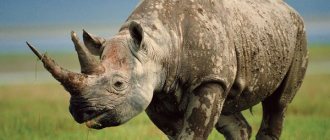The eagle is the king among birds. Courage, strength, nobility, power - that's all about him. In many legends and myths, divine qualities are attributed to him. Seeing an eagle flying was considered a good omen.
The ancient Syrians depicted this feathered predator with human hands - they believed that it was he who guided the souls of the dead into the other world. In almost all nations, the eagle is associated with wisdom, courage, and insight.
Eagles: description
The eagle, as a bird of prey, is known to many peoples of the world. This bird is associated with such concepts as glory, luck, victory and power. That is why this majestic bird can be seen on the coats of arms of many states. Today, many species of eagles are known, which are distinguished by their impressive sizes. Some species boast that their body length is almost 1 meter. As a rule, females are slightly larger than males. The weight of adult individuals ranges from 3 to 7 kilograms. Such species of eagles as the steppe eagle and the dwarf eagle are characterized as the smallest representatives of this family.
Appearance
Representatives of this family have a fairly massive and well-developed body. They have strong and relatively long legs, with feathering down to the toes that looks more like “pants.” At the same time, the head is quite compact in size, and the neck is strong and muscular. The eyeballs are large, but do not differ in noticeable mobility, although at the same time, the mobility of the neck is such that such a defect does not have a significant, negative impact on the life activity of the bird of prey.
Eagles are also distinguished by their rather strong claws and beak. The beak has a curved end, which confirms the predatory nature of the bird. Claws and beaks are characterized by the fact that they grow throughout life, but the peculiarities of the life of eagles lead to the fact that they are worn down naturally. This family has strong, long and wide wings, with well-developed plumage. Their span can reach 2 and a half meters. Such aerodynamic characteristics allow the predator to remain in the air for a long time, at an altitude of about 800 meters, and maybe higher.
Interesting to know! Eagles easily cope with air currents of any intensity. Moreover, they are capable of attacking their prey at a speed of at least 300 km/h.
Eagles have extremely acute vision, so from a height of 500 meters they are able to look out for fairly small prey, in the form of lizards, rodents, snakes, etc. Moreover, the presence of peripheral vision allows the bird of prey to exercise control over 12 square meters of air space. Eagles' hearing is not as developed as their vision, and their sense of smell is generally weak.
The color of the plumage depends on the species of this family, therefore it is characterized as monotonous, with the presence of specks and contrasts. Eagles can be easily distinguished by their flight patterns, their agility and the way they make rare but deep and powerful wing beats.
Behavior and lifestyle
Eagles are a family of monogamous birds, as they choose a mate for life, so they mostly live in pairs. The peculiarity of eagle hunting is that they circle the sky for hours, looking for potential prey on the ground. At the same time, eagles not only look out for their next victim, but also monitor events happening around them. Eagles do not hunt on a daily basis because they are able to store food in their crops for several days.
How long do eagles live?
The average life expectancy of eagles in natural conditions is about 25 years. It should be noted that there are species that live longer. When kept in captivity, steppe eagles and golden eagles can live for half a century. There are cases of eagles living up to 80 years.
INTERESTING FACTS – EAGLES
What is the difference between an eagle and a hawk
Often people who are far from ornithology confuse the eagle with other birds, hawks or kites.
The main difference between a hawk is the smaller body size of the bird. The representative of the hawks has short, rounded wings, but the tail, on the contrary, is large with long feathers. Unlike eagles, hawks cannot soar. In the air, they tend to make rapid movements with their wings.
The kite has a weak, small beak, long wings and a tail that looks like a fork. Unlike eagles, kites do not need to hunt live prey; they only need carrion for food. And to create nests they choose tall but lonely trees.
Types of eagles with photos and names
Based on careful research carried out by German specialists at the molecular level, it was found that eagles from the Aquila group are the ancestors of all species of eagles.
In relation to eagles, in our time a revision is being carried out covering all types of taxa, which is associated with a temporary decision to unite all taxa into the genus “Aquila”. For example:
Hawk eagles (Aquila fasciata)
Hawk eagles, which have an average wing length of about 50 centimeters, with a total length of a bird of prey of about 70 centimeters. Their weight is somewhere on average 2 kilograms. The birds are distinguished by their blackish-brown back, gray tail, with a dark pattern located across the plumage. The belly area has lighter shades, buffy or whitish, with inclusions of longitudinal streaks, as well as dark transverse stripes on the plumage, including in the area of the legs and undertail. Females of this species, compared to males, are much larger.
Pygmy eagles (Aquila pennata)
Which, in terms of the size and proportions of their body, are more reminiscent of small buzzards, while the predator’s characteristic eagle-like appearance is clearly visible. The length of the predator is about 50 centimeters on average and the average weight is about 1 kilogram. The wingspan of adults averages about 1.2 meters. Males and females have almost identical colors. These birds of prey have a strongly curved but relatively short beak. The color can be dark or light, although light body color options are much more common.
Indian hawk eagles (Aquila kienerii)
Which are not large in size, with a body length of about 52 centimeters and a wingspan of 1 meter or a little more. The tail of this species of eagle has a characteristic curve at the end of the tail. The upper part of the body is painted in darker tones, and the chin, throat and crop are almost white. The lower part of the body, as well as the legs, have a characteristic reddish-brown tint, with almost black, wide stripes. It is very difficult to distinguish a male from a female.
Golden Eagles (Aquila chrysaetos)
Which are considered large and very strong representatives of the genus with a body length reaching almost 1 meter and a wingspan of up to 2 and a half meters. Females of this species are also larger than males and can weigh almost 7 kilograms. Golden eagles have a typical eagle beak, laterally compressed and high. At the bottom, the beak ends in the form of a hook.
Imperial Eagle (Aquila heliaca)
Which are distinguished by long and wide wings. The tail of Imperial Eagles is straight, and their average length is within 80 centimeters, while the wingspan reaches 2 meters, with a weight of no more than 4 and a half kilograms. The habitats of imperial birds and golden eagles often overlap.
Stone eagles (Aquila rapax)
Growing in length up to 65 cm on average. Moreover, they weigh no more than 2 and a half kilograms, and their wingspan is no more than 1.8 meters. Some varieties of stone eagles have different plumage colors, depending on age, individual characteristics of the subspecies, as well as individual variations in plumage colors.
Steppe eagles (Aquila nipalensis)
With a body length of no more than 86 cm and an average weight of about 3 and a half kilograms or a little more. The wingspan of this predator reaches at least 225 centimeters. Adult individuals are distinguished by a dark brown plumage color, with a red spot in the nape area, as well as primary flight feathers, colored in black-brown tones. The tail feathers are dark brown in color, with transverse stripes of a grayish tint.
Greater Spotted Eagle (Aquila clanga)
Greater Spotted Eagles and Lesser Spotted Eagles, although the populations of these birds are not large at all. They represent birds of prey from the Accipiterae family, which can be classified as birds of the genus Lophaetus or Ictinaetus.
Kaffir eagles (Aquila verreauxii)
With a body length ranging from 70-95 cm, with a wingspan reaching two meters, this type of bird of prey weighs 3.5-4.5 kg.
Moluccan eagles (Aquila gurneyi)
Which are also distinguished by their considerable body size, reaching a length of at least 90 centimeters. Females weigh about 3 kilograms, with a wingspan of about 180 centimeters.
Silver eagles (Aquila wahlbergi)
Representing diurnal predators, with a body length of up to 60 centimeters and a wingspan of up to one and a half meters. Silver eagles are found in many African countries.
Wedge-tailed eagles (Aquila audax)
Which are considered quite large in their kind, since they have a body length of almost 1 meter, and their wingspan is within 2 meters or a little more. Females are larger than males and can weigh up to 5 kilograms.
The fossil species of eagles is the Reliocene (Aquila kurochkini). Its average size is comparable to modern hawk eagles at the morphological level.
Why is the eagle called the “royal” bird?
The history of the majestic bird goes back to antiquity and is enshrined in the mythology of almost all peoples of the world. In antiquity, the eagle was considered a solar symbol and brought good luck and victory. For the Romans, he personified the storm and was the bearer of Jupiter's lightning. The Egyptians endowed the eagle with a sun sign associated with the warm morning rays. The eagle acquired the same solar sign in China.
Rulers, as a solution to create the image of a strong ruler bearing divinely undeniable power, took on the eagle image, as if approaching the celestials. They decorated themselves with clothes with decorations made of eagle feathers or corresponding symbols. Gradually, from primitive mythology, the eagle image was transferred to world religions. A proud bird flying so high was taken in Hinduism, Christianity and other religions as the embodiment of the divine face.
In our state, the double-headed eagle represents the ideal government: powerful, glorious, fair.
If you find an error, please select a piece of text and press Ctrl+Enter.
Natural habitats
The habitat of eagles is quite extensive, and each species has chosen unique territories for itself. It is worth noting that there is one feature: these places are located as far as possible from a person and his life activities. In this regard, eagles are found more often in mountainous areas or in semi-open landscapes.
If we take golden eagles, they live on the territory of our country, starting from the North Caucasus and ending with the southern regions of Primorye. For their nesting they choose hard-to-reach forest areas. Wedge-tailed golden eagles, which can be considered relatives of golden eagles, prefer to nest in forest plantations of New Guinea. Steppe eagles live in steppe zones, as well as semi-desert zones located between Transbaikalia and the Black Sea coast.
Imperial Eagles have long been found in the forest-steppe zones of Ukraine, in the steppes of Kazakhstan, in the forests of the Czech Republic, Romania and Spain. In addition, similar species of eagles live in the territories of Iran and China, Slovakia and Hungary, Germany and Greece, as well as other European countries.
Many peoples tame golden eagles and then use them in hunting as birds of prey.
Diet
The diet of eagles is quite extensive, and mainly consists of objects of animal origin, often quite large, although these food objects are mainly small hares, gophers, birds and fish. If eagles go hungry for a long time, they can easily feed on carrion, which they find either on land or in water.
Interesting information! The raptors have been documented to feed on a wide variety of animals, including black lofurs, domestic and wild chickens, spur and bush partridges, green and domestic pigeons, kingfishers and even squirrels.
If the hunt is successful, the eagles eat their prey immediately or feed it to the chicks. Some species of eagles hunt quite poisonous snakes. After eating, the eagle drinks it with plenty of water and begins to tidy up its plumage.
EAGLE IN ACTION! Eagle attacks on wolves, dogs, kangaroos...
Hunting
Eagle Hunting
Eagles are effective at hunting. They do not kill unnecessary animals; they catch only for their own food and for their chicks. They mainly hunt small game.
Eagles not only obtain food on their own, but are also ready to engage in outright robbery. For example, they can take prey from a smaller bird of prey on the fly.
Eagles are excellent at hunting flying birds. They overtake the prey by surprise, because they hunt from such a height that the bird cannot see them. And then they dive at such a speed that the prey does not have time to notice them. The slow-motion footage of the eagle fighting with its prey in flight is interesting. An eagle can catch birds on the fly and carry the trophy further.
Reproduction and offspring
It is characteristic of eagles that they reach sexual maturity only at 5 years of age. Depending on the type of predator, eagle nests can be found in bushes or trees, as well as on rocks high in the mountains. Both the female and the male are involved in the construction of the nest, although it is believed that the female puts in more labor, skill and care. Once a nest is built, if it is secure, eagles can use it for many years.
There are cases when eagles capture nests built by large birds, such as a falcon or raven, of course, if these nests suit the eagles due to their size. The female lays eggs once a year, and their number is no more than 3. Hatching eggs is practically no different from hatching eggs of other birds. After birth, you can already understand from the chicks that the birds have a complex predatory character. As a result of squabbles inside the nest, weaker individuals often die. They may be thrown from the nest or receive fatal blows from the beak.
Important point! The mating games of eagles are a spectacular sight as they take place in the air. Both individuals demonstrate all their capabilities, chasing each other and performing complex aerobatics.
Gravedigger eagles are considered the most responsible parents because they take turns incubating eggs. After a month and a half, the offspring are born, and after 3 months the parents teach their offspring the basics of flight. Since they have excellent flight training, they make long migrations in winter.
Steppe eagles are also of particular interest in this regard, since their nests are located directly on the ground. The eggs are hatched by the females, and the male feeds his other half all this time. Both parents also take part in the upbringing and education of their offspring. Young eagles travel great distances in search of a mate. After finding a mate, they begin to build a nest for themselves and begin to lead a sedentary lifestyle.
Varieties
The largest eagle in the world is the golden eagle. Its mass is 6 kg, its wingspan is 3 m. The structure and size of the wings allow the golden eagle to soar in the sky for up to several hours. The plumage color is dark brown. The tail is long.
Hunting takes place during the day. Food: squirrels, martens, birds, rodents. Habitat: African continent, North America, Eurasia. They can settle both on the plains and in the mountains.
This bird, the mountain eagle, makes nests in trees and rocks. The distance between nests is usually quite large, because each bird has its own hunting area. The female lays 1 – 2 eggs per year.
The smallest eagle is considered the dwarf eagle. Migration is inherent in it. Habitat: Asian countries, the African continent, Russia.
The poultry eagle is a very rare occurrence. Not everyone can cope with its content. But, if you still want to purchase this predator, then you need to take it as a chick. An adult eagle cannot be domesticated or tamed.
It is also important to organize your meals properly. You cannot feed the bird pork - the meat should be lean. In the first two months, the eaglet needs to be fed 6 times a day. In addition, you need to make sure that your pet flies for at least an hour a day.
The image of an eagle can be seen on stamps, money and coats of arms. This is not at all surprising, because the predator is amazingly beautiful.
Natural enemies of eagles
And yet, eagles, despite the fact that they have practically no natural enemies, represent a rather vulnerable link in the planet’s ecosystem. As a rule, eagles often die in fights with stronger aerial predators, as well as with an ordinary wolf.
But this is not such a big problem compared to the lack of food for many days. Due to the fact that the eagle's body requires constant and stable food, they have to migrate together with other species of birds to warmer regions or countries.
Important point! When there is enough food for eagles, as a result, more chicks survive in their nests, and when the food supply is scarce, then, as a rule, only one, but the strongest chick survives.
As the results of various observations and studies show, human economic activity is to blame for the decline in eagle populations. As humans develop more and more areas of the landscape, this leads to the fact that eagles experience a shortage of food. The thing is that many food chains either migrate to other areas or disappear altogether. As a result, many birds die from hunger. Eagles are often electrocuted as they attempt to build their nests on power lines (poles).
Nest
Eagle nests are built at the maximum height of a given area. They do this to ensure safety for the chicks, to have an excellent vantage point and ambush site at the same time, and to take off with less effort.
The nest is established for many years, being completed and expanded every year. Since it is located very high, as soon as the chicks appear in it, the eagles decorate it with a “canopy” of branches, most often pine. Green branches provide enough shade to protect from the scorching sun.
Population and species status
Some birds of prey belonging to the hawk family have the protection status of “Least Concern”. These include:
- Hawk eagle.
- Indian Hawk Eagle.
- Golden eagle.
- Stone eagle.
- Kaffir eagle.
- Silver eagle.
- Wedge-tailed eagle.
- The following species of birds of prey have received the “Vulnerable Species” conservation status:
- Imperial Eagles.
- Spanish burial grounds.
- Greater Spotted Eagle.
The steppe eagle has received the status of an endangered species, and the Molucca eagle has the status of close to vulnerable. Birds of prey such as the dwarf eagle and imperial eagle are listed in the Red Book in some countries.
Man and eagles
The image of an eagle is located on the coat of arms of Russia, although eagles represent a rather rare category of birds of prey, and therefore are listed in the Red Book. Eagles, as a symbol of strength and endurance, are on the verge of extinction as a species, all thanks to the economic activities of people. The constant decline in the number of birds of prey is due to many factors, including poaching, as well as the constantly deteriorating environmental situation.
Thanks to the presence of the Red Book, as well as specialists, it is possible to constantly monitor and discover new species of eagles that are in danger. This allows you to respond to such problems in a timely manner, changing the situation for the better.











